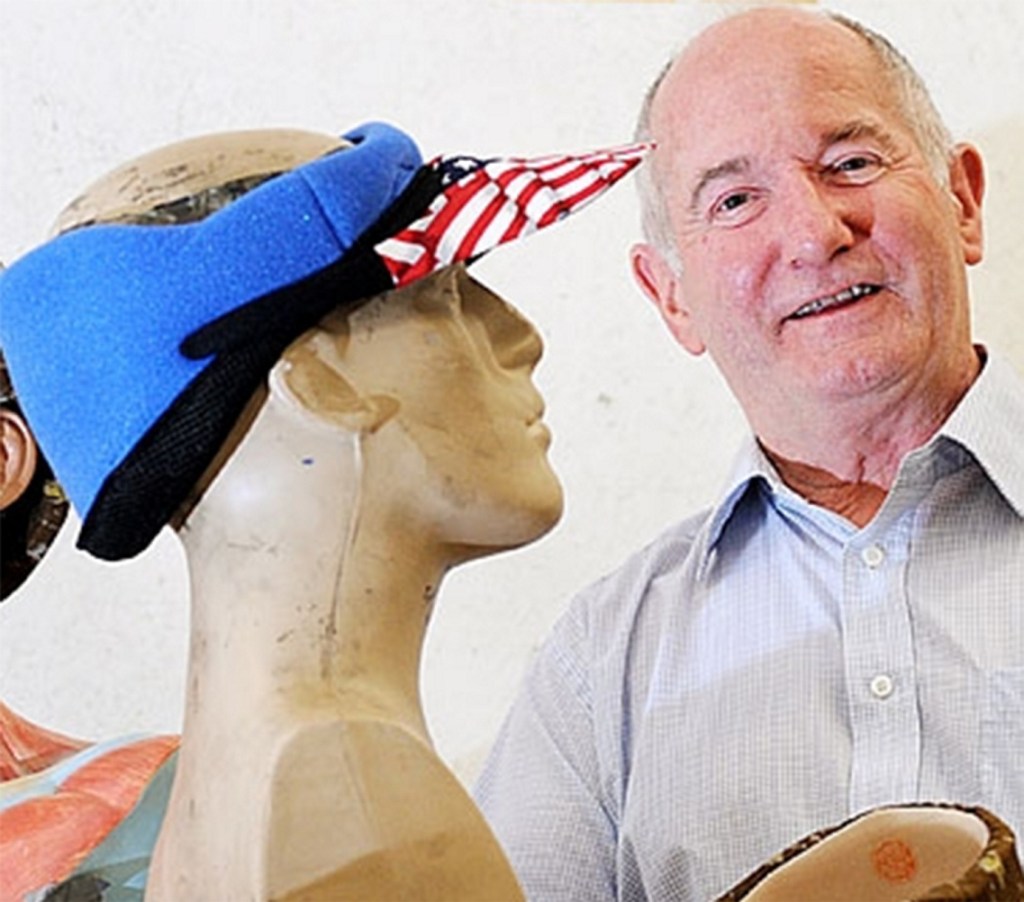Name: Jim Ferguson
Age: 69
Title: CEO and co-founder
Company: Alba-Technic LLC, Winthrop
About: The company provides personal impact protection technology that is highly advanced and that people will wear without losing their dignity.
Website: albatechic.com
What’s your biggest challenge now?
To transfer the technology from the lab into a product. It’s very easy to continue research and design and get state and federal grants (to support that), but there comes a point where you have to turn it into a product. You have to pilot manufacturing, do quality control, marketing, hire the right people, perfecting the process.
In the lab setting, it’s easy to make anything once; but once you start production, you have to have consistent, verifiable results.
When you have a product like a sweat band that is worn by just about anybody, we took that concept and built a protective headband. I have the patents personally on the shock-absorbing technology.
If someone is at a higher than normal risk of falling and hitting their head, and they are on any kind of a blood thinner, instead of a bump, a fall might result in a subdural hematoma or intracranial bleeding that can disable or kill them. For an elderly parent or family member in some kind of long-term care community, a fall can make them much less available and increase the financial costs of care dramatically.
So we have the Smarty, which is trademarked. We made it so people will not feel they are wearing a medical helmet, and they can wear it with dignity.
We have done focus groups with the National Institutes of Health and UCLA, and the people said they would wear it night and day 88 percent of the time.
It can’t look like a medical helmet. Good engineering can take dignity and wearability as design factors.
What’s the best advice anyone has given you?
It was my father (Daniel Ferguson). I was in my early 20s. My background is in engineering. I had traveled extensively in the Middle East and in Europe and I went back to Scotland. I was considering going to the United States for six months to design nuclear power plants and he said I should go.
I did it in the early 1970s and I’m still here. Scotland is one of the most beautiful and best countries in the world, but the Scots have a sense of adventure.
How do you foster creativity in yourself or your staff?
No one is allowed to make a mistake, and by that I mean there is no such thing as a mistake.
If you don’t give someone the responsibility to create, they’re not going to make a mistake. They are going to do the safe thing. Instead of swimming in the shallow end of the pool, they should dive in the deep end.
If you aren’t making mistakes, your learning experiences suffer. If someone is really trying to get an idea out of their head and turn it into a product or a process, they have to have the freedom to make an error. No one makes a mistake by making a mold with an error. Unless you are driven by the freedom, by the safety of making a mistake, you are going to be stagnant.
What’s your biggest fear?
(Whether) we can kick off a good marketing campaign and manufacture enough high-quality product for key opinion leaders. We have to increase our manufacturing. Last night and today (Thursday) we have been at the Angel Capital Association (the largest angel professional development organization in the world) in Boston with over 700 international angel investors. We’re only one of four of over 5,000 organizations that the National Institutes of Health has sponsored to be here. That’s a great honor, and with that comes a great deal of interest and investment.
Where will your company be in five years?
According to our consultants, and the independent business planning the NIH has sponsored for us — these are research tanks and not our staff — $20 million to $100 million in sales per year, in health care, sports, defense, lifestyle protection and people recovering from injury. We have a wonderful platform of technology that can be developed into head and hip protection, into many areas where people need to protect themselves.
Maybe we won’t do all the manufacturing in Maine. We are now in discussions with the local company for after we exceed our own capability. I have four buildings in Maine, and I intend to stay here as long as I can.
Send questions/comments to the editors.




Success. Please wait for the page to reload. If the page does not reload within 5 seconds, please refresh the page.
Enter your email and password to access comments.
Hi, to comment on stories you must . This profile is in addition to your subscription and website login.
Already have a commenting profile? .
Invalid username/password.
Please check your email to confirm and complete your registration.
Only subscribers are eligible to post comments. Please subscribe or login first for digital access. Here’s why.
Use the form below to reset your password. When you've submitted your account email, we will send an email with a reset code.